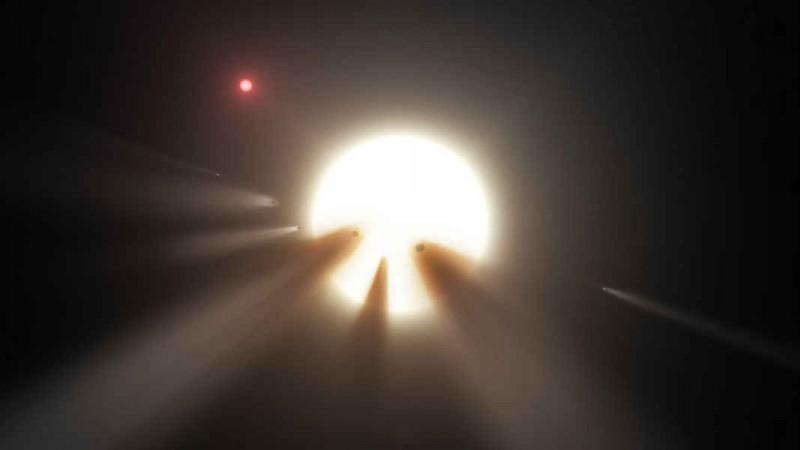
Astronomers have come up with new details about the mysterious Tabby's star that could shed more light on the strange phenomenon surrounding it.
ALSO READ: NASA's SDO captures stunning image of mid-level solar flare: 5 things to know
Here's all you need to know about Tabby's star:
1. Present in the constellation Cygnus the Tabby's star dubbed -- KIC 8462852 -- was found dimming unusually in September 2015 by a group of astronomers from Yale University led by Tabetha Boyajian. The star is nicknamed after Tabetha.
2. It is located at a distance of around 1,280 light-years away from Earth. The astronomers observed a 20 percent drop in the luminosity of the star between 1890 and 1989. A dip of 22 percent was also observed in the star within a few days was observed in this mysterious star too.
3. Various conspiracy theories cropped up surrounding Tabby's star. An alien megastructure causes the unusual fluctuations in the star's luminosity, goes a theory.
4. Two research papers dismissed the story of extraterrestrial megastructures. The significant fluctuations taking place in the star are due to the cloud fine debris present on the star.
5. The research was carried out by astronomers from University of Arizona in Tucson with Huan Meng as the lead researcher. The first study conducted with the help of Infrared Spitzer and UV Swift space telescopes in which the differing wavelengths from October 2015 to December 2016 were analysed by the astronomers.
6. In short blue wavelengths, the star was found to dim quicker in comparison to the longer infrared wavelengths.
"That almost absolutely ruled out the alien megastructure scenario, unless it's an alien microstructure," Meng told Science News.
Meng's team found that the star faded by almost 4 percent every year. They published the findings on arXiv.org on August 24.
7. Another astronomer Joshua Simon of the Observatories of the Carnegie Institution for Science in Pasadena, California used All Sky Automated Survey and found a similar dimming in data on Tabby's star since 2006. He also spotted a rise in the star's luminosity in 2014.A magnetic cycle like that of the Sun led to this rise in the brightness of the star, according to Simon.












